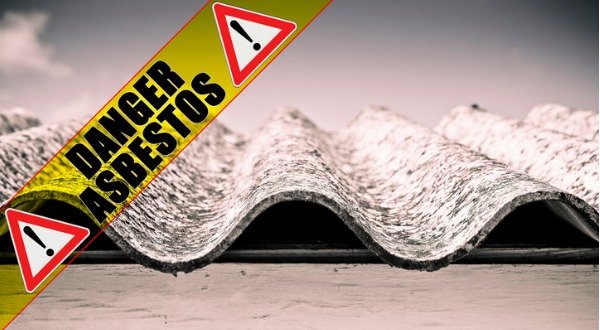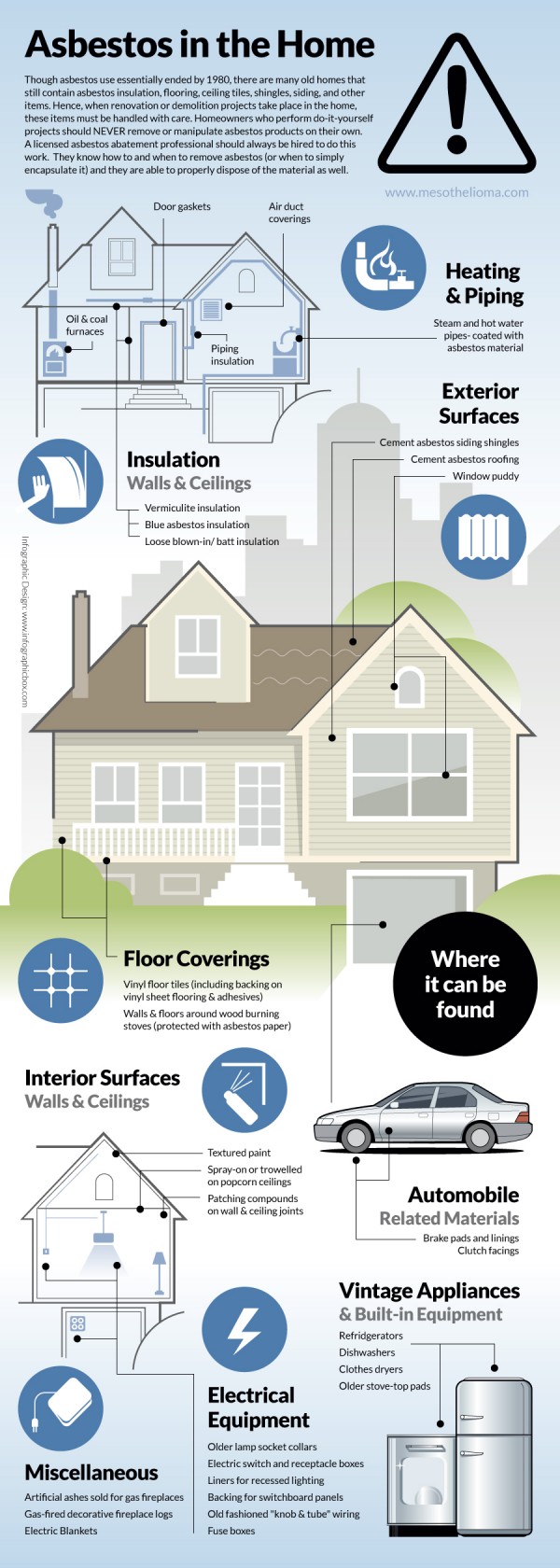Cancer is a serious disease. But late-night commercials asking if you or your loved ones have been exposed to asbestos, and asserting that you may be entitled to financial compensation, can trivialize these diseases.
Mesothelioma cancer is often the subject of these commercials, while the actual nature of this dangerous cancer often takes a back seat. These ads are full of fast-talkers and difficult to understand “legalese”, so let’s break down exactly what asbestos is, how it causes mesothelioma, and how to deal with this aggressive disease.
What is Asbestos?
Asbestos comes in six different forms, all naturally occurring, and all known carcinogens. With the recent emphasis on organic and locally-produced materials, many people are under the impression that naturally occurring materials are safer than their synthetic counterparts. However, even natural materials can be harmful.
Asbestos was mined in large amounts throughout the last century because of its desirable qualities like flame resistance, sound absorption, tensile strength, and affordability. The very name “asbestos” comes from the Greek word asvestos, which means unquenchable or inextinguishable. These characteristics made asbestos a valuable addition to building materials, so it was used liberally in construction industries worldwide.
The low flammability of asbestos made it perfect for electrical insulation and flame retardants. In this capacity, the mineral was often mixed with concrete or woven into textiles to maximize utility. Other products like tile, building insulation, adhesives, and caulking have all been known to contain asbestos, which means construction professionals are among the highest populations at risk for asbestos exposure.
The mineral was also used in products that need to withstand a lot of friction or heat, like brake pads and linings, gasket linings, and filters. Other professions with high instances of asbestos contact are boilermakers, shipyard workers, and mechanics.
The form of asbestos you’re most likely to encounter is chrysotile asbestos, which is the only asbestos still mined today. According to the Mesothelioma Cancer Alliance, about 90-95% of all asbestos that remains in buildings is chrysotile. The other forms of asbestos are amosite, crocidolite, tremolite, actinolite, and anthophyllite. These are all dangerous carcinogens.
Due to irresponsible abatement techniques and degradation of products containing asbestos over time, asbestos can even be found in soil, air, and water. Though relatively harmless in soil, disturbing the ground can release small particles into the air, where it can be inhaled into the lungs and cause health complications.
How is Asbestos Related to Cancer?
Once inhaled or ingested, asbestos poses a risk of inflammation to internal organs. The most dangerous asbestos-related diseases are asbestosis, lung cancer, and mesothelioma. Asbestosis is a chronic lung condition developed after asbestos exposure. Lung cancer is a cancer that forms in the lungs due to a number of risk factors. Mesothelioma is another cancer, which affects the linings of internal organs.
The most common form is pleural mesothelioma, which takes root in the lining of lungs. There are two additional forms as well, which are rarer. Peritoneal mesothelioma makes up about 20% of mesothelioma cases and affects the abdominal lining. Pericardial mesothelioma forms in the lining of the heart.
While it can take 20-50 years after asbestos exposure for mesothelioma to take root in your body, this cancer moves quickly after infection. It is one of the longest latency diseases around and hits older demographics hardest, presenting a huge financial burden. Besides the long latency, mesothelioma is also a very aggressive form of cancer, often with a bleak prognosis. Many mesothelioma patients live less than a year after diagnosis.
What to Do:
- First, check your national laws related to asbestos usage and abatement. Many countries have different rules and history with asbestos, so this will give you a good idea of your relative chances for exposure.
- Second, check when the building was built. It’s important to remember that asbestos may still be present in and around your home or workplace, depending on when it was constructed.
- If you suspect asbestos may be present in a product you own, get rid of it. If you think it’s around your home, school, or workplace, contact an asbestos abatement professional.
- Above all, do not attempt to remove the mineral yourself. If you are in the middle of a DIY or renovation project, clear the area and contact a professional.
Asbestos laws vary across the globe. In the UK the mineral is banned, in the US it’s allowed in levels of one percent in products, and in China there are no regulations. Depending on your home country, you might still be at high risk for asbestos exposure. There are steps you can take to reduce your risk of exposure or limit further exposure.
This information may seem daunting, scary, and overwhelming. The best thing to remember is that you do have options for every situation. From legal recourse to treatment, there are resources available that can help you control exposure or cope with a diagnosis.




















Hi, I am a retired auto worker and know that back in the 80’s I was working around asbestos. We built transmissions and my department stacked the clutch plates that went into every transmission as part of what puts the trans through the shifting process. I remember the safety people coming to check the plate stacker, to make sure that there were no issues with asbestos in our work area. First of all, the plate stacker wasn’t working that day so their testing wasn’t thorough. The “test” was for about an hour on a machine that wasn’t working. The asbestos was supposedly encapsulated, therefore not harmful. That’s what they said. There was dust all around. Not in an enclosed operation.
Another point to note of interest. The building was pretty old, used as a paper producing plant before switching to transmissions. At one point they began an ababtement process. The insulation on the huge pipes overhead were draped in plastic to catch the removal of the asbestos.
I happened to become friends with some people who owned an abatement business, doing testing and removal. I got a good education on all of that, since it was a big thing in the news at the time.
Let me just say this. It has been in the back if my mind all these years that the possibility of exposure to asbestos was likely, just due to those two facts. I hope the I don’t get cancer, but what are the odds?
She should proof-read (affecting by)…
Are you for real…?
Don’t worry about proof reading more important things to worry about than that previous comment refers.
My dear dad died 1979 terrible way to go and my poor mum for not one penny. We were told we had to prove which company he’d worked for that exposed him to it. This was impossible. Just over ten years later a doctor told me things had changed you could do something but had just gone over the 10yr criteria. Wouldn’t helped dad but my mum led a frugal life as she had been wife& mother who stayed home like lots in her day. Auntie also died worked in Bovis head office cooking for directors each day she cleaned white dust off worktops 25yrs. Hubby got 2.5k comp 😞Got mum moved as Social housing riddled I threatened legal action they bought her flat but still were freeholders. It has affected my family so badly. A Victoria female supervisor noticed that the women in the factory presented with facial tumours. Our Govt’s knew about it but someone made lot of money
I love that you make us aware of cancer causing things in our environment but many of us don’t have the money to check soil or even whats in our older homes. You apparently can’t run from it it is everywhere along with other dangerous chemicals. We can be aware and do what we can but moving or paying to have our home fixed isn’t an option in alot of people’s lives. Thank God we can pray for his protection and in the end our lives are in his hands. Stress is also a killer so we use the increased wisdom God is giving in these last days and use the herbs and essential oils and all the other things provided for us and then trust him. God is all powerful and can keep us safe if we trust and obey! God bless you for all you do!!
Hello Deborah Brown…I really liked what you said…yes making us aware of The Truth About Cancer is so valuable. Many people are not able, as you said, to afford to soil testing etc, but most people have access to our God and prayer. Prayer is powerful. His Word tells us what we should eat and not eat. Herbs and Essential Oils are powerful. Trusting in our God to keep us safe and healthy comes through repentance, obedience and holiness to Him. Thank you for sharing. Diane from Australia
Thank you for alerting people to this awful disease. My father died at 88 , almost six years ago due to high levels of asbestos exposure 50 years prior to this. He used to unload sacks of asbestos in the London .Docks and no protection was given to workers. He died 5 weeks after diagnosis of a very aggressive form of mesothelioma. My brother and myself were awarded a substantial sum in compensation by the UK Government ( not sure what happens in the US), but monetary compensation cannot erase what we went through at the time. It still affects me now. If we can spare one person from this awful suffering it will be worthwhile.
When we were children in school in the 1960’s, we used asbestos infused “clay” for school projects. When dry, this product was very sturdy due to the asbestos fibres it contained. There was a certain amount of dust around after working with it and the bits of clay crumbled off and dried. Of course, we swept it up and I’m sure the school janitor had exposures as well in cleaning floors and surfaces.
It would be difficult to trace a cancer back to that source; but it goes to show that we can’t be too vigilant for contaminants around us everywhere.
How can I know if our home has any asbestos materials which were used in construction of it, or test for asbestos in our home? I would very much like to know how I can find this out. Thank you
I am a bit behind with reading TTAC articles, but if you live in the US, there are building hygienists that will come, look around, take samples, and send them out for analysis. Search for “asbestos inspectors.” Make sure you verify their license with your state’s regulatory agency. If the house is built before in the 1960’s or before, it’s safe to assume there is asbestos somewhere. I’ve read that even homes built in the 1990’s may contain asbestos.
We live in a Victorian-era house. We learned that our kitchen ceiling is (painted) asbestos tiles. We were instructed that removing it would significantly increase our toxic risk and leaving it intact and keeping it painted was our best action. There is no way we could ever afford “proper” removal of it so it stays. We don’t worry about it because it’s out of our control and we know God knows that. We are confident that every thing else we do to maintain optimal health is the best we can do. Personally, I think old wood and the potential mold and rot is a much greater threat in theses old houses.
Thanks for sharing your personal experience with us Kris. Wishing you healthy and blessings!
Hello, my name is Judy, and I’m a Canadian citizen.
My husband, Barry was 64 yrs, and had a bad flu that didn’t get better. I took him to a Hospital Emergency, Dr’s did many tests & scans, a Specialist did a biopsy & he was diagnosed with Sarcomatoid Mesothelioma, given 4-8 weeks to live, passed away 13 wks later, Feb 1, 2018. He was always healthy & strong, never been sick or in a hospital before, had just moved & purchased a home (no Mortgage insurance) for his semi-retirement, we did not have a Plan B…
I’m currently recovering my health after blood tests diagnosed me as having Anemia and depletion of Vitamins & Minerals, due to providing 24/7 palliative nursing care for my husband until his passing. I’m still walking through Loss & Grief and have symptoms of PTSD.
Following his diagnosis, Barry called his work insurance co. and they replied “We do not cover illness or cancer.”, they sent a letter with condolences and closed his file.
Barry also called WorkSafe, and they said he & his family did not qualify for any compensation since he did not pay into Workman’s Compensation (he owned & operated his Home Inspection Company; yet according to Canadian tax laws, he did pay both Employer & Employee taxes).
A family friend has looked into this situation & has received legal advice… I have to “gather evidence” to prove that he got the Asbestos exposure through his work history in order to have any access to Trust Funds set up for asbestos victims & their families.
Question:
1. where can I find an exhaustive list of asbestos related products?
I feel a list would be helpful for me to know what questions to ask, as Barry’s family members & friends seem to be as ignorant as I am as to Asbestos products, exposure & contamination.
Thank you for this article, and a comment space for me to ask for practical help 🙂
Judy